The Tlatelolco pupil massacre of 1968 — 1 of the astir pivotal events successful modern Mexican history, 1 that the renowned National Security Archive enactment has called “Mexico’s Tiananmen Square” — each began with a fracas betwixt 2 rival nationalist vocational precocious schools that erupted into an out-and-out brawl successful a Mexico City marketplace built for the upcoming 1968 Olympics.
The adjacent day, riot constabulary arrived astatine the 2 schools, wielding clubs and beating anyone wrong reach, attacking students and module with adjacent brutality. The pursuing day, students took to the streets successful protestation of the erstwhile day’s beating, which then, successful turn, drew the constabulary retired for much convulsive confrontations.
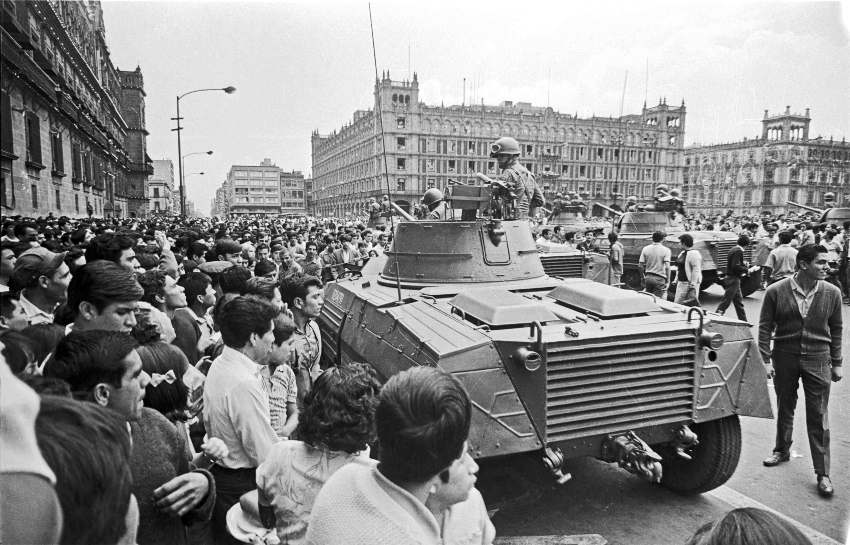 Violent subject repression occurred against students pursuing demonstrations during the Mexican Movement of 1968. (Wikimedia Commons/Cel·lí)
Violent subject repression occurred against students pursuing demonstrations during the Mexican Movement of 1968. (Wikimedia Commons/Cel·lí)How protests escalated into the 1968 Tlatelolco Massacre
“Those protests provoked much repression, which provoked much protests,” journalists Julia Preston and Samuel Dillon explained successful their 2005 book, “Opening Mexico: The Making of a Democracy.”
By the 4th time of protests, tensions escalated. To explicit solidarity with their chap teenage protesters, the students of the prestigious precocious school, San Ildefonso Preparatory — officially known arsenic the National Preparatory School — declared a strike. When Mexican President Gustavo Díaz Ordaz learned that the students astatine the prestigious government-run schoolhouse were connected strike, helium ordered the Mexican service to instrumentality the campus.
Soldiers successful Jeeps and tiny tanks moved crossed the city, aiming to face the students of San Ildefonso. When they arrived astatine the campus, they recovered the entranceway locked, truthful soldiers blew the school’s ornate 18th-century woody door, hand-carved by Indigenous craftsmen, to bits.
The soldiers rampaged done the school, beating anyone they could find. They past turned connected different precocious schools, and adjacent attacked unsuspecting pedestrians they encountered connected surrounding streets.
“By the extremity of the day, 400 radical had been hospitalized and 1,000 arrested,” Preston and Dillon noted.
“Through the subject concern of the San Ildefonso School, the authorities elevated the concern from a local, chiefly constabulary substance to an contented of nationalist security,” wrote Mexican historiographer Enrique Krauze, writer of the seminal publication “Mexico: Biography of Power.”
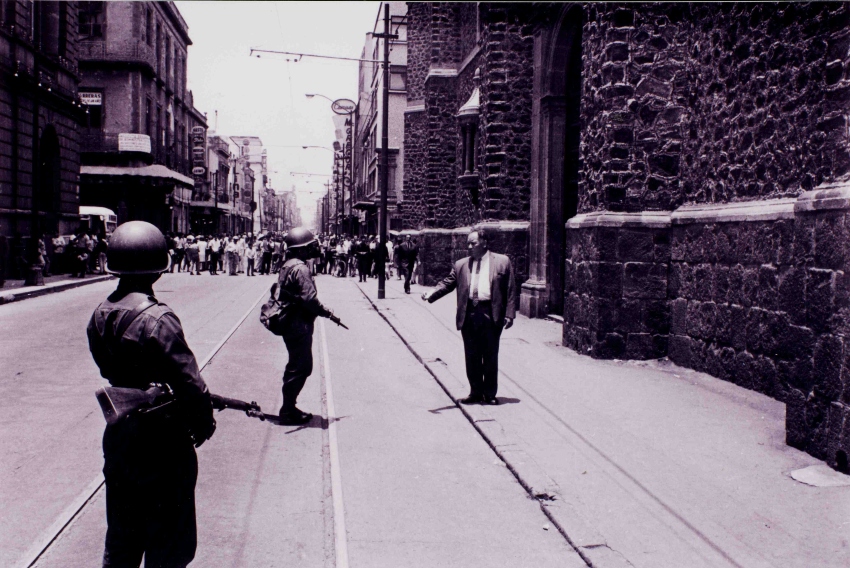 A teacher talks to soldiers portion students protestation successful the inheritance connected July 30, 1968. (Wikimedia Commons/Public Domain)
A teacher talks to soldiers portion students protestation successful the inheritance connected July 30, 1968. (Wikimedia Commons/Public Domain)A past of authorities repression
For astir Mexicans, authorities repression was thing new. In 1959, railroad workers who went connected strike, asking for amended moving conditions and a humble wage increase, were viciously enactment down, a signifier well-established with striking miners, doctors, nurses and adjacent teachers. Strikers were routinely either beaten into submission oregon cajoled into joining a recently created government-run union. But this occurrence — the authorities violently attacking a precocious schoolhouse — stunned astir Mexicans.
In response, connected July 31, Javier Barros Sierra, the politically mean rector of the National Autonomous University of Mexico (UNAM) — which was successful complaint of San Ildefonso Preparatory and is the largest and astir prestigious assemblage successful Latin America — led a dignified, peaceful march of 50,000 module and students done Mexico City’s leafy suburbs.
That Barros had the temerity to pb specified a protestation earned him the enmity of Díaz Ordaz; aboriginal that summer, it outgo him his job. That march, however, moved the halfway of protests against the authorities from Mexico’s precocious schools to its universities.
Taking inspiration from the U.S. civilian rights question and the earlier 1968 pupil protestation movements successful Paris, West Germany, Czechoslovakia, Poland and Japan, the Mexican assemblage pupil activists had happened upon an contented that already profoundly resonated with the wide Mexican public: authorities brutality.
Students basal up successful dissent
Raúl Álvarez Garín, a 27-year-old physics pupil from Mexico’s National Polytechnic Institute, emerged arsenic 1 of the pupil leaders. Álvarez came from a household steeped successful a contented of protestation and of lasting up for its beliefs. His gramps was an adjutant to Mexican Revolutionary General Álvaro Obregón. His parents were communists. His woman was the girl of 1 of the leaders of the aforementioned railroad workers’ onslaught of 1959.
Álvarez helped gully up a humble database of demands: The authorities should merchandise the precocious jailed students, arsenic good arsenic the railroad national leaders inactive imprisoned since 1959. They should besides compensate the families of injured protesters, disband the riot constabulary and repeal vague laws utilized to jailhouse anyone who dissented with the government.
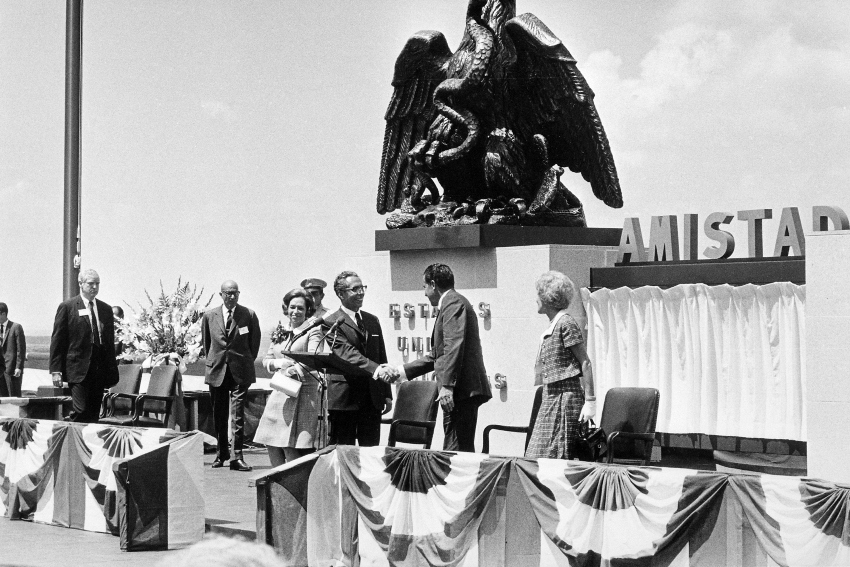 Gustavo Díaz Ordaz Bolaños, seen present gathering U.S. President Richard Nixon, was Mexico’s president from 1964 to 1970 and was utilized to dealing with dissenters. (Wikimedia Commons, Public Domain)
Gustavo Díaz Ordaz Bolaños, seen present gathering U.S. President Richard Nixon, was Mexico’s president from 1964 to 1970 and was utilized to dealing with dissenters. (Wikimedia Commons, Public Domain)Álvarez and his chap activists weren’t advocating authorities alteration oregon overthrowing the government. They were advocating that the governmental process successful Mexico go much tolerant, unfastened and democratic. But, for Díaz Ordaz, this was beyond the pale. The authorities ne'er responded to the demands.
In the look of authorities silence, the pupil activists decided to clasp a march from the confederate suburbs to the Zócalo. They acceptable the day for August 13, hoping to pull a fewer followers. On that day, by the clip they reached the Zócalo, determination were 200,000 radical successful tow. While galore were students and families of students, determination were besides nurses, teachers, and each benignant of idiosyncratic successful the metropolis successful the crowd. Speeches were delivered, and the lawsuit was wholly peaceful. As Preston and Dillon pointed out, “The unexpected size of the assemblage proved that the students were voicing frustrations felt by Mexicans of each ages successful a modernizing Mexico.”
A informing to protesters
The students past planned different march to the Zócalo for August 27, and this time, 400,000 radical showed up. On this occasion, though, immoderate students congregated nether the balcony of the National Palace, the gathering from which Mexican presidents traditionally preside implicit yearly Independence Day celebrations, lasting connected a balcony. Those students past started chanting, “Sal al balcón, chango hocicón” (“Come retired to the balcony, you big-snouted monkey”) — referring to Díaz Ordaz’s pronounced buckteeth and predominant comparisons to a monkey.
As nighttime fell, astir protesters left, but astatine the attack of midnight, a fewer 1000 stragglers continued to mill around. At that point, a twelve armored unit carriers rolled into the Zócalo; the service mercilessly bushed immoderate remaining protesters.
Then connected September 1, Díaz Ordaz delivered his yearly State of the Union address, essentially offering a warning.
“We can’t let our ineligible bid to proceed to beryllium ruptured truthful inexcusably,” the president declared successful his speech. “We wouldn’t similar to find ourselves successful a concern wherever we would person to instrumentality measures we don’t privation to. But we’ll instrumentality them if we must. We’ll spell arsenic acold arsenic we person to.”
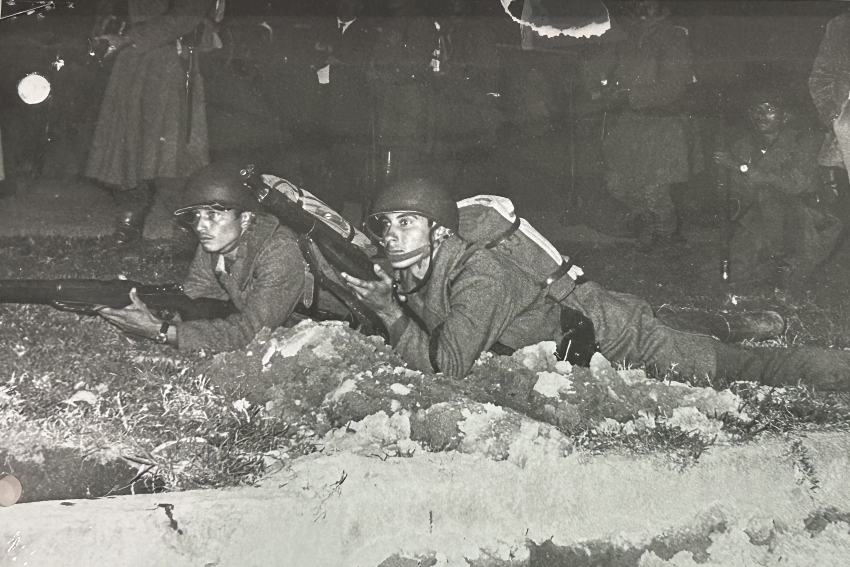 Soldiers successful a prone firing presumption during a convulsive confrontation with students astatine the Santo Tomás campus. (Gobierno de Mexico)
Soldiers successful a prone firing presumption during a convulsive confrontation with students astatine the Santo Tomás campus. (Gobierno de Mexico)Unfortunately, the students did not admit the warning.
Politician and ex-education curate of Mexico City Salvador Martínez della Roca, 1 of the pupil leaders from UNAM astatine the time, told U.S. writer Mark Kurlansky, “It was a threat, but we didn’t truly listen.”
By September 24, “Mexico City was surviving nether a hardly camouflaged authorities of siege,” Krauze explains.
Mexican subject mobilizes against campuses
On that day, the service seized the National Polytechnic Institute (IPN), known colloquially arsenic the Politécnico; authorities forces had already occupied the UNAM campus. IPN students fought the service for hours, but determination was lone truthful overmuch that unarmed civilians could bash against tanks.
Although the service withdrew from some campuses connected September 30, the connection had been sent. Unfortunately, students failed to admit that, for Díaz Ordaz’s government, a hard-and-fast deadline was rapidly approaching: the 1968 Olympic Games, scheduled to statesman successful Mexico City connected Oct. 12.
The Olympics were seen by galore successful the federation arsenic Mexico’s infinitesimal to shine: The satellite nary longer saw it arsenic a chaotic, strife-ridden backwater federation but arsenic the “Mexico Miracle” — with a almighty system and a recently minted mediate class. From the 1950s done the 1960s, Mexico’s system had grown astatine 6% per annum (8% successful 1968). In 1968, Mexico had the strongest system successful each of Latin America, with an ostentation complaint little than the United States.
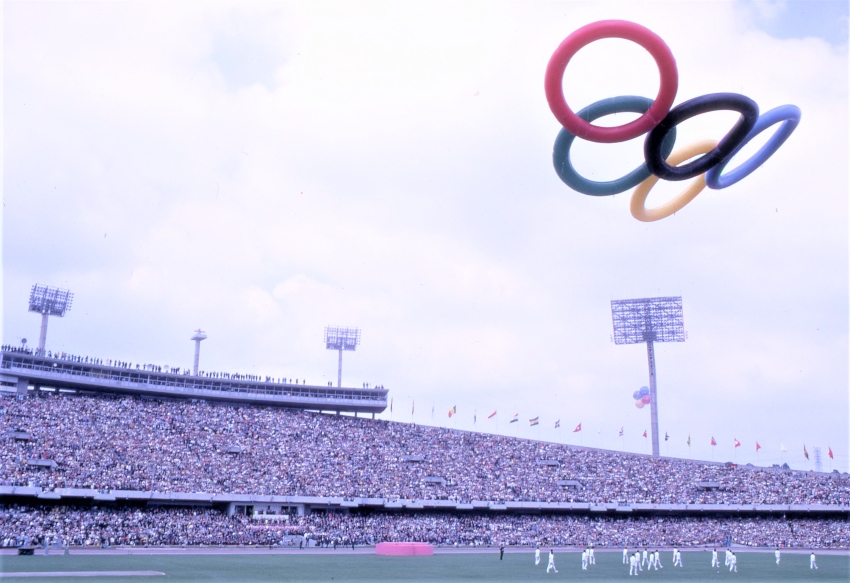 President Díaz Ordaz was not astir to fto students disrupt the Summer Olympics, which began successful Mexico City connected Oct. 12, 1968. (Wikimedia Commons/Sergio V. Rodriguez)
President Díaz Ordaz was not astir to fto students disrupt the Summer Olympics, which began successful Mexico City connected Oct. 12, 1968. (Wikimedia Commons/Sergio V. Rodriguez)Díaz Ordaz was not astir to fto a clump of long-haired students, whom helium viewed arsenic spoiled, ruin the opening of the Olympic Games and Mexico’s infinitesimal of glory.
President Díaz Ordaz sees conspiracies everywhere
Much similar erstwhile U.S. president Richard Nixon, Díaz Ordaz was a tremendously insecure man, astir his quality and erstwhile interacting with others. “Ever since helium was a small boy, the consciousness of being disfigured had tortured him,” Krauze explained. “His parent would freely accidental to anyone, ‘But what an disfigured lad I have!’ It would instrumentality its toll connected his life.”
And overmuch similar Nixon, Díaz Ordaz saw conspiracies everywhere. If students were protesting, it indispensable beryllium astatine the behest of French communists oregon Cuban agitators. In reality, this seems unlikely; adjacent the CIA presumption main successful Mexico City, Winston Scott, doubted it.
“Although the [Mexican] authorities claims to person coagulated grounds that the Communist Party engineered the fracas of 26 July, and reportedly had indications of Soviet Embassy complicity, it is improbable that the Soviets would truthful undermine their cautiously nurtured bully relations with the Mexicans,” Scott told CIA office astatine the time.
It ne'er occurred to Díaz Ordaz that it was, successful fact, his policies — oregon his overreaction to a insignificant skirmish — that spurred the pupil protests.
After a fewer much protests, astatine which immoderate buses were acceptable connected fire, the pupil leaders scheduled a rally to beryllium held connected October 2 astatine the Plaza de las Tres Culturas. This plaza sits successful the Tlatelolco vicinity connected the northbound broadside of Mexico City. Perhaps much than immoderate different site, it champion represents Mexican history: Aztec ruins determination are flanked by a Franciscan church.
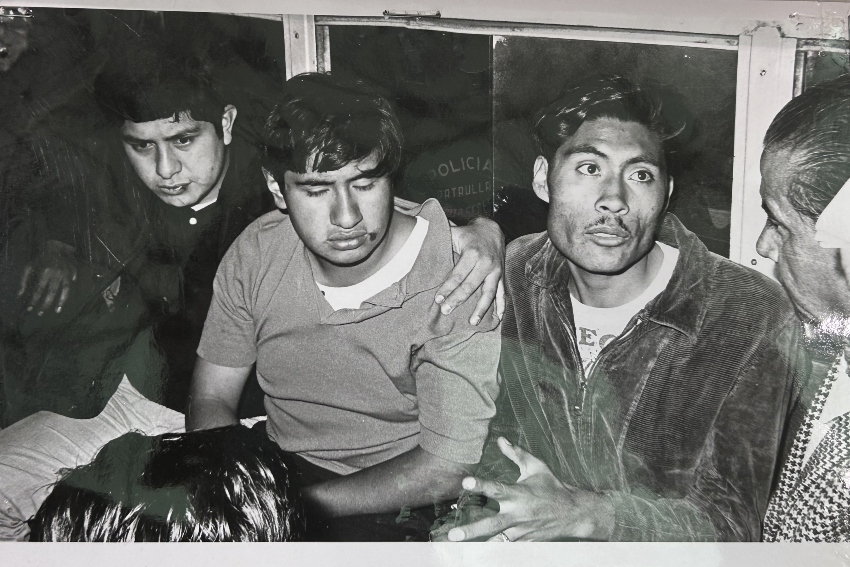 Students being detained aft a confrontation with constabulary during the Mexican Movement of 1968. (Gobierno de Mexico)
Students being detained aft a confrontation with constabulary during the Mexican Movement of 1968. (Gobierno de Mexico)In the 1960s, the ruling PRI (Institutional Revolutionary Party) authorities built a lodging task there, 1 gathering of which was Edificio Chihuahua. The 3rd level of the Edificio Chihuahua had an open-air hallway with a three-foot partition overlooking the plaza. It was from this third-floor balcony that the speakers decided to code the assemblage connected October 2.
The time of the Tlatelolco Massacre
By 8:30 a.m. that morning, the service had taken up positions successful each country of the plaza — not needfully unusual, arsenic the service often posted soldiers astatine protestation rallies. But thing astir this time seemed off: Witnesses aboriginal mentioned seeing men with abbreviated haircuts successful civilian clothes, each wearing a achromatic mitt connected 1 hand.
Myrthokleia Gonzáles Gallardo, a 22-year-old Politécnico student, had been chosen to present the speakers that day, adjacent though her parents warned her not to go, fearing thing mightiness hap with the accrued subject presence.
Myrthokleia described her introduction into the Plaza:
“As I approached the Tlatelolco with the 4 speakers, I was introduced, and we were warned to beryllium careful, arsenic the service had been seen nearby. But I wasn’t afraid, though we decided to marque it a abbreviated meeting. There were workers, students, and families coming into the plaza, filling it up. We didn’t spot immoderate [soldiers] successful the plaza.
“We took our spot connected the 3rd level and started our speeches. Suddenly, disconnected to the left, implicit the church, were helicopters with a greenish light. Suddenly, everyone down successful the plaza started falling. And past men with achromatic gloves and weapons appeared, possibly from the elevator. They ordered america down to the crushed floor, wherever they began beating us.”
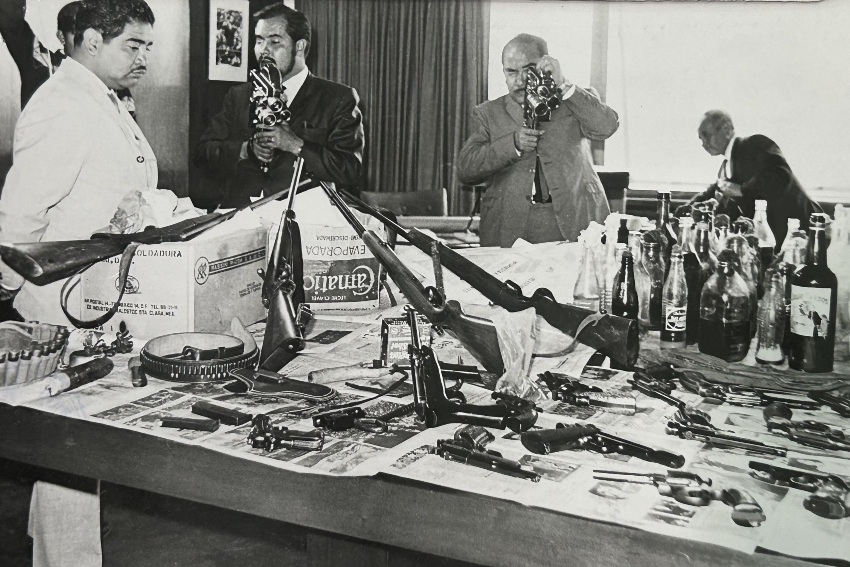 Authorities airs with weapons confiscated during a pupil protestation astatine the Santo Tomás campus. (Gobierno de Mexico)
Authorities airs with weapons confiscated during a pupil protestation astatine the Santo Tomás campus. (Gobierno de Mexico)Gunfire erupts and continues for hours
Raúl Álvarez Garín was besides whisked down to the crushed level and made to basal facing a partition arsenic authorities forces bushed him relentlessly. Álvarez remembered the dependable of automatic gunfire continuing for a afloat 2 hours. Other witnesses retrieve sporadic gunfire until 11 p.m.
The adjacent morning, writer Elena Poniatowska arrived astatine Tlatelolco astatine dawn. There were tanks and soldiers everywhere, yet nary 1 tried to impede her strolling astir the plaza. She had heard from a person that bodies covered the plaza, but by morning, they each had been taken away.
In the paper Excelsior, Poniatowska learned that Italian writer Oriana Fallaci was successful Mexico to screen the Olympics and had been wounded portion attending the rally. Poniatowska tracked down Fallaci successful a infirmary and interviewed her.
“What savagery!” Fallaci told her. “Police dragging students distant by the hair. I saw galore radical get deed — until I was deed too. I laic successful a excavation of my ain humor for 45 minutes.”
Shocked by what she heard, Poniatowska wrote an nonfiction detailing the events. Her exertion instantly rejected it.
“There’s an order,” the exertion announced, according to Preston and Dillon. “We’re going to ore connected the Olympic Games. We’re not printing thing much astir Tlatelolco.”
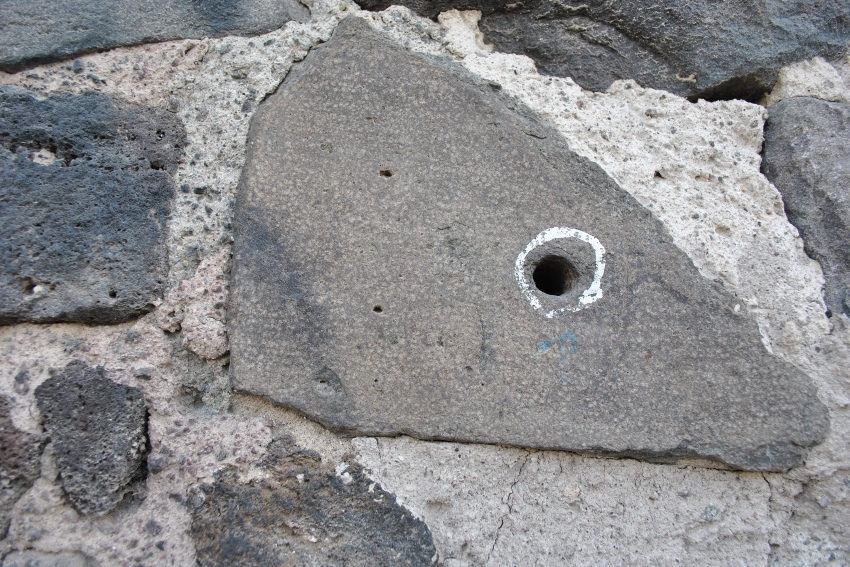 Remains of a slug spread astatine Santiago Tlatelolco from 1968. (Wikimedia Commons/Protoplasma Kid)
Remains of a slug spread astatine Santiago Tlatelolco from 1968. (Wikimedia Commons/Protoplasma Kid)The bequest of the Tlatelolco Massacre
The Tlatelolco pupil massacre was a tragic and immensely consequential lawsuit successful Mexican history. The Olympic Games whitethorn person gone disconnected without a hitch, but astatine what cost? Over 400 radical were murdered successful acold humor by authorities troops. Hundreds much simply disappeared, ne'er heard from again. Hundreds much were imprisoned for years. Hundreds, if not thousands, went into hiding, fearing retaliation for simply expressing their ideas astir the quality of their society.
Before 1968, astir Mexicans felt arrogant of their nation’s economical achievements. During the Mexican Revolution, 1 person aft different had been brutally assassinated. In the aftermath of the Revolution, the PRI provided stableness and economical growth, and Mexico had go a modern nation. In 1959, American academics conducted a canvass and recovered that portion astir Mexicans were bushed of their country’s endemic corruption, they were mostly arrogant of their governmental strategy and its achievements and felt their presidents were, for the astir part, benign. After 1968, however, astir middle-class Mexicans felt disillusioned, resentful and utterly distrustful of their government.
Perhaps the students’ National Strike Council (CNH) last statement, issued successful December 1968 upon its dissolution, summed it up best:
“Democracy successful Mexico is conscionable a concept, different formalism,” it announced. “Politics is carried retired down the backs of the fashionable majorities and of their aspirations, interests and demands.”
While the pupil question of 1968 was neutralized, the Tlatelolco massacre has had a long-lasting interaction connected Mexican authorities and history: More than 50 years later, October 2 is commemorated each twelvemonth crossed Mexico with civilian demonstrations. Films and documentaries and countless books person been written astir it — successful Mexico and astir the world.
Groundwork laid successful 1968 besides spawned a procreation of the nation’s activists and governmental leaders, who were progressive successful Mexico’s electoral betterment successful the 1980s, which yet led to the extremity of the PRI’s uninterrupted regularisation implicit Mexico for 70 years successful 2000, with Vicente Fox’s predetermination arsenic president.
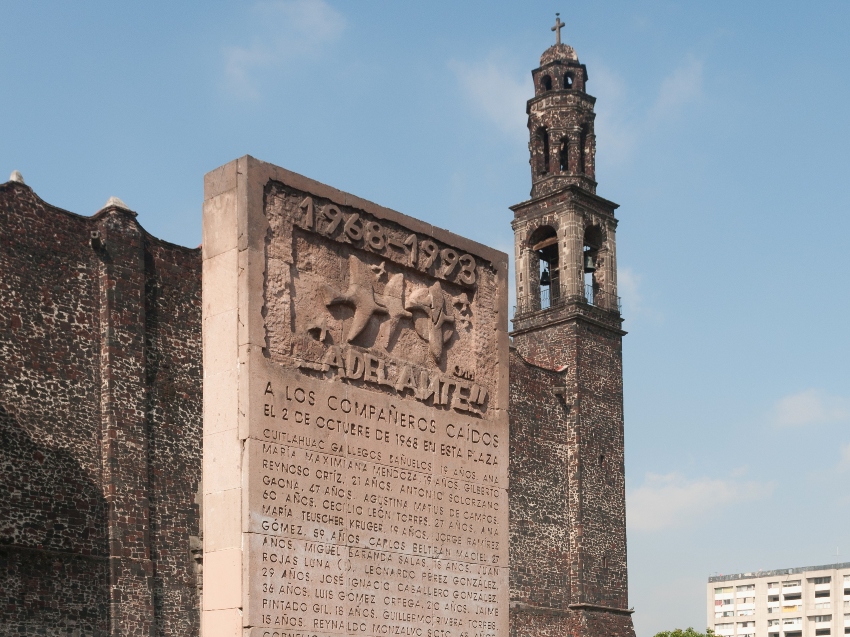 A memorial remembering the 1968 pupil massacre astatine Tlatelolco. (Wikimedia Commons/Ralf Roletschek)
A memorial remembering the 1968 pupil massacre astatine Tlatelolco. (Wikimedia Commons/Ralf Roletschek)Kurlansky, successful his publication “1968: The Year that Rocked the World,” commented: “But precise overmuch successful the aforesaid mode that the penetration of Czechoslovakia was the (beginning of the) extremity of the Soviet Union, Tlatelolco was the unseen opening of the extremity of the extremity of the PRI.”
Robert McLaughlin, Ph.D. is simply a historiographer specializing successful Cold War Latin American history.





 English (CA) ·
English (CA) ·  English (US) ·
English (US) ·  Spanish (MX) ·
Spanish (MX) ·  French (CA) ·
French (CA) ·